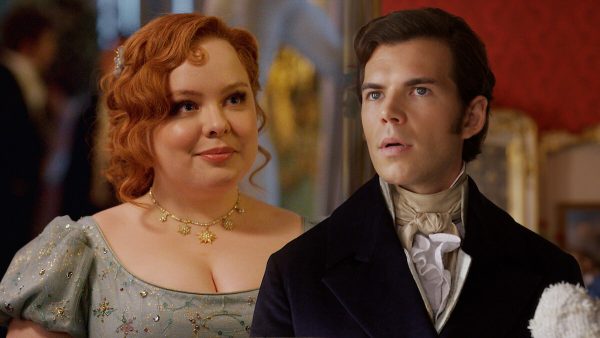“Turning Red” and Representation in Media
Pixar’s “Turning Red” shows puberty and growing up in an honest light.
(Spoilers for Pixar’s “Turning Red” within.)
On Mar. 11, Pixar released “Turning Red” exclusively to the streaming service Disney+. The movie, directed by Domee Shi, follows Meilin Lee, a 13-year-old girl whose family has been cursed to occasionally turn into giant red pandas.
“Turning Red” is unique for several reasons. For one, it is the first Pixar movie to be entirely directed by a woman. In addition, it is the first movie in Pixar’s catalog to directly address periods and puberty in a realistic light.
Whenever Meilin’s emotions become intense, she turns into her “panda.” The first time this happens, after an embarrassing night when her mom finds her drawings of a boy, she hides in the bathroom.
However, her mom thinks that she has gotten her first period and shows up with painkillers, pads and other period essentials while giving her a lecture on how her body is changing.
The terms “period” and “menstruation” are never used, however it is clear what is being referenced due to Meilin’s mother’s in depth discussion on pads.
In addition, Meilin’s mother says “You are a woman now and your body is starting to change. It’s nothing to be embarrassed about. You are now a beautiful, strong flower. Who must protect your delicate petals and clean them regularly.” While this may not be obvious to those who do not menstruate, it is a clear metaphor for those who do.
In addition to the film’s discussion of periods, Meilin and her friends are shown to have crushes on boys. They are obsessed with the boy band “4*Town” and an older employee at a local store.
“Turning Red” shows a more realistic version of some teenage girls’ “boy obsessions” compared to other love stories shown by Disney and Pixar. In “Inside Out,” Riley has crushes on fake boys. However, in “Turning Red,” real crushes are shown. Meilin and her friends are shown to find their classmates attractive, and handle that in a realistic and healthy (albeit embarrassing) way, like when Meilin allows herself to acknowledge her crush through art.
Critics of “Turning Red” argue that the film is too inappropriate for children and does not broadly represent a large group of people like other Pixar films may.
However, I would say that it is a wonderful representation for everyone. Despite the fact that Meilin Lee is a Chinese-Canadian woman, she manages to relate to a large variety of preteen and older audiences.
We all experience puberty and the awkwardness of growing up. The majority of us remember first crushes, body odor and all of the other frustrations, big and small, that occur when growing into adults. While other Pixar films cover the idea of growing up, none show the hard truths quite as well as “Turning Red.”
Of course, my scope is limited. I only have the perspective of a young, white, liberal, female-born person. However, I would argue that many underrepresented groups felt more seen by Meilin than Andy from “Toy Story” or Marlin from “Finding Nemo.” Young women, girls and other “uterus-havers” get to see the nitty-gritty experiences of growing up for the first time on screen.
Women have long been seen in media as polite, perfect people-pleasers. In reality, women are flawed beings that have their own desires outside of being saved by the archetype of a Disney prince.
Increasing representation of realistic, flawed girls in major ways like this is so important, especially in children’s films. When underrepresented groups see themselves on screen, it allows them to avoid feeling alienated or hating themselves for being different.
I would recommend anyone who has ever felt nerdy, odd, or alone to watch “Turning Red.”

Arieis “A” Feldpausch is a senior. This is her third year on staff. In her free time, Arieis enjoys indie folk music (specifically The Mountain Goats),...










Tiffany Ramon • Apr 26, 2022 at 1:11 pm
Thank you for sharing A! excellent summary of the movie! I will definitely check this one out.
Dena • Apr 26, 2022 at 11:43 am
I LOVE this article, and ill be showing it to my preteen daughter!